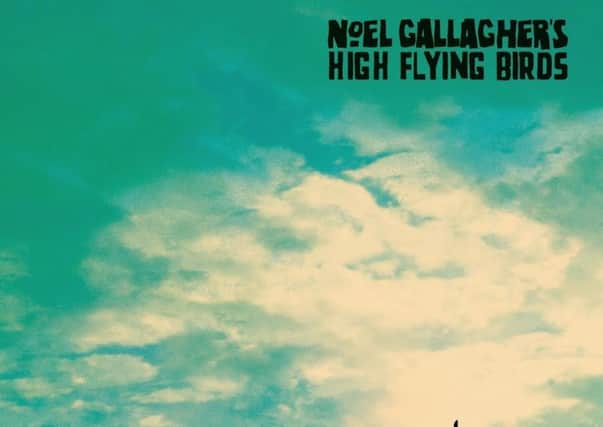Top of the pop


Noel Gallagher’s High Flying Birds, Who Built The Moon?: Unveiling his first first solo album, back in 2011, Noel Gallagher promised an imminent follow-up with the prog-electronic group Amorphous Androgynous that would, he said, be ‘truly incredible’. That the album we got instead, Chasing Yesterday, deviated only so far from his work in Oasis, induced a few sighs at opportunities missed. Not so, however, for Who Built The Moon? Here Gallagher blasts off into the cosmos, with producer and DJ David Holmes as his co-pilot. Holy Mountain features towering brass and looped tin whistle; She Taught Me How to Fly is juddering disco-rock; It’s a Beautiful World gazes up at the stars over twinkling keyboards, and an interlude in French; while If Love is the Law has a cavernous, Phil Spector-like arrangement. A thrilling adventure. Duncan Seaman
Bjork –Utopia: It’s two years since Bjork released her heartbreak album Vulnicura to critical acclaim, and her follow-up Utopia is sure to win over hearts, broken or otherwise. In a reversal of tone, Utopia re-appropriates Vulnicura’s imagery of closing wounds into a powerful declaration of renewed openness to the world. This combination of retrospection and optimism is the truest triumph of Utopia, and it acts as a synthesis of Bjork’s eclectic musical history. From the pastoral flutes in the title track to the feral passions of Body Memory, she presents a consolidation of her life’s work in Utopia that is both familiar and groundbreaking, sensitive and blunt, and which demonstrates a complete command of the wide array of instruments and talents at her disposal. Zander Sharp
Advertisement
Hide AdAdvertisement
Hide AdAnton Du Beke –From the Top: Nobody ever expected to utter these words, but Anton Du Beke’s cover of an Arctic Monkeys classic is pretty darn good. The Strictly stalwart’s old school swing, big band cover of the indie band’s I Bet You Look Good on the Dancefloor is one of the highlights on his startlingly refreshing debut album. Think Hit The Road Jack meets Sheffield, with a little bit of Strictly stardust scattered over it. Music snobs may roll their eyes, but Du Beke nimbly manages to inject his fun character into decades-worth of hits, proving that he really is a modern version of his idol and former co-star, the late Sir Bruce Forsyth. It’s true there is nothing ground-breaking here. Du Beke has a pleasant show tune-friendly voice and his jolly jaunt of a record might just earn him his own niche. Lucy Mapstone
Matt Terry –Trouble: Matt Terry won The X Factor, and then fade into the background. But with the arrival of his debut album, Trouble, he will not go unnoticed for much longer. The album really shows off his voice well, while offering a more mature sound than is possibly expected. The 14-strong track-listing includes Terry’s Spanish vocals on Enrique Iglesias’ song Subeme La Radio, which also features Sean Paul. It’s an impressive collaboration for a first album. It’s also a smart one, and a move that exposes Terry to a wider fan base utilising his fluent Spanish. For the rest – there’s a good variety, from super catchy Sucker For You to the smooth, more easy listening Got You. After performing The Thing About Love on the current series of the X Factor, it’s climbing up music charts. Kerri-Ann Roper
Telemann – Twelve Solo Fantasias: One of the most remarkable discoveries in the world of classical music took place two years ago, when twelve long lost Viola da Gamba Fantasias by the famous Eighteen-century German composer, Georg Philipp Telemann, were found almost three hundred years after being written. In content you have the feel of a composer musing for his own pleasure, at times revelling in his own virtuosity. Now the internationally famous Huddersfield-born exponent of the instrument, Robert Smith, has engagingly recreated them, his attention to the sheer beauty of the music preferred to outgoing brilliance of the fast movements. He has been captured in an ideal church acoustic for release on the Resonus label. David Denton